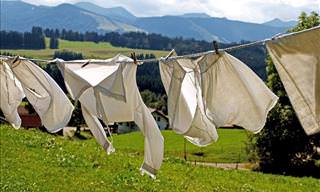

However, let’s be real here – how often do you really achieve this type of bliss? For many of us, we’re lucky if manage to wake up feeling semi-functional in the morning.
After we have come home from work, cooked dinner, helped the kids with their homework, tidied the house, we often want at least an hour of me time, This typically pushes our bedtime back to around midnight, and though we’re exhausted by that point, that doesn’t stop our racing mind from waking us up at points during the night.
However, what if we told you that you might be working against your body’s natural rhythm by forcing yourself to sleep in one 8-hour period?
Roger Ekrich, a historian and author, in his book “At Day’s Close: Night in Times Past, gives his readers a mammoth 500 references of civilizations, from ancient to living, that practice what he calls “segmented sleep.”
While this was and still is seen all over the world among distinct societies, there are a few differences when it comes to the nitty-gritty. For example, Ekrich found that segmented sleep almost always looks the same – it begins with a subject going to bed about two hours after dusk (this is the first sleep), then they wake up in the middle of the night for one or two hours (this is the waking period), and then the subject goes back to sleep for several more hours (this is the second sleep).

Early records have shown that the “waking period” between “first” and “second sleep” was a time that was often used for unwinding and leisure. In fact, 16th-century French physicians urged couples who were trying to conceive to have intercourse after they wake up from the first sleep, as the body is much more relaxed and rejuvenated following some sleep.
Ekrich’s research shows that segmented sleep was pretty much “put to bed” in the West by the turn of the 20th century. This is probably due to multiple factors, including the implementation of the modern 9-5 workday, as well as 19th century doctors urging parents not to wake children if they don’t naturally wake up after a “first sleep.”
This is an interesting concept, and one that we think can work well for some people. Who knows? Maybe in the future, doctors will start prescribing “first” and “second” sleep to their patients. Considering that an estimated 164 million Americans have struggled with insomnia at some point in their lives, it’s apparent that our ancestors went about this nightly ritual in a much better way.
Source: tiphero
Images: depositphotos

Suffer from Dust Allergies? Try These Natural Treatments!
Do you suffer from dust allergies at home? If so, here are 8 natural remedies that you should definitely try!

There’s a Map for Literally EVERYTHING in the World!
These rare and unusual maps provide some unique information!
 5:15
5:15
Difficulty Sleeping? Try This Healthy Drink Before Bed
Struggling with sleep? This natural drink can help.
 14:07
14:07
Feeling Anxious During Bedtime? This Guide Will Help
Felling anxious while going to bed? Listen to the tips shared by this therapist on how to train your brain to worry less.

11 Grease Removal Tips You Wish You Knew Before!
Grease stains can be notoriously difficult to remove, but that will be a thing of the past if you use these 11 fantastic grease-removal methods.

Why You Should Never Drink Too Much Water
It’s always important to remember not to get dehydrated, but you need to know that there is such a thing as overhydration, and it can be very dangerous too.

10 Super-Effective Tips No One Else Will Tell You About
Fix and do just about anything with the following 10 supercool tips and tricks!

Don't Waste Time Cleaning Kitchen Items! Here's What to Do
Here's a list of the most irritating kitchen items to clean.
 8:12
8:12
These Organization Tips Are the Most Useful You'll Discover
These essential DIY tips will ensure a clean and organized home.
 18:31
18:31
These 27 Great Bathroom Hacks Will Make Your Life Easier
Looking for some ingenious bathroom and shower hacks to make your life a lot easier? If so, you’ve certainly come to the right place!

Tired of Socks Wearing Out Too Soon? These Tips Will Help!
Tired of buying packs and packs of socks all the time? With the help of these 5 useful and simple tips, you'll make your socks wear much longer!

These Alternative Uses For Sandpaper Will Surprise You
Sandpaper is incredibly versatile, and can be used to solve all sorts of common problems. Here are 18 uses for sandpaper that you wish you knew of before.

Stop Your Pipes From Freezing with This Simple Hack
Don't let your pipes freeze this winter! Here's how to go about it.

9 Unexpected Uses of Your Vacuum Cleaner
Your vacuum cleaner has these unusual and surprisingly helpful advantages.
 1:49
1:49
Sanitize and Diminish Odors in Any Space in 1 Minute
This tip will deodorize and sanitize the air in any fridge, cabinet, or any other small space.

How to Clean Your Jewels at Home for Free
Enjoying clean jewels used to be a tedious chore, or an expensive visit to the jeweler's, but this way you can do it at home, for free!

Say Goodbye to Rotten Fruits & Veggies with These 12 Tips
The way you store your groceries can affect their shelf life. These 12 tips will help keep your fruits and vegetables fresh for longer.
 4:08
4:08
Lost a Key and Need to Pick a Lock? Do This!
Need to pick a lock? Here's how to do it.

9 Effective Methods for Removing Oil Stains from Clothes
Oil stains are the greatest enemy, not to mention a nightmare, for anyone who does laundry - but now there's a solution...actually 9 of them!

9 Facts You Didn’t Know About In-Flight Food And Drinks
Airplane food is notorious, but since we don't have any other options, the following 9 tips will make the culinary experience that much more enjoyable.

Your Body Can Do More Things For You Than You Ever Knew
If you suffer from the odd ache and pain, you'll be glad to know that you can make them go away simply by knowing these 14 fantastic body hacks.

Items You Keep on the Kitchen Counter But Really Shouldn’t
Do you keep a knife holder on the kitchen counter? What about a jar with coffee or spices? Learn why that’s probably a bad idea...

WARNING: If You Love Dogs, This Information is Vital
If you're a dog lover, you should spread this information around. Don't feed dogs these common foods!

10 Tips for Cleaning With Salt - Number 8 is My Favorite..
Salt can be found in every home, but besides for cooking, it is efficient and useful for cleaning. Here are 10 effective ways to use salt for cleaning.

The Ultimate Guide to Stress-Free Family Holiday Travel
Enjoy holiday travel with your family this season without the usual headaches.

Home Sanitizing Is Easy With These DIY Disinfectant Wipes!
This article shows you how to make disinfectant wipes at home 3 ways using just three ingredients you already have at home.
 3:55
3:55
9 Terrific Methods to Cut Up a Watermelon
What is the best way to chop a watermelon? Here are 9 creative ways.

12 Surprising Ways to Use Your Swiffer Around the House
These Swiffer hacks will change your cleaning routine.

There are 7 Types of Rest: Which One Do You Need?
You'll be surprised to discover that there are 7 different types of rest that your body, mind, and soul need, and today you'll get to know all of them.
 4:11
4:11
Say Goodbye to Marble Stains - Cleaning Hacks That Work!
Say goodbye to those stubborn marble stains with these useful cleaning hacks.

Baby Oil Can Do Things You Never Even Considered!
Baby oil is usually used to keep your baby's skin soft, but in the next article, you'll get ideas for six more effective and surprising ways to use it.
 18:55
18:55
An Expert in Failure: An Inspiring Speech All Should Hear
This is a terrific lecture everyone who has ever been afraid of failure.

The ULTIMATE Guide for Using Foods for New Purposes
This guide will give you the useful tips and helpful information you need to find alternative uses for most of your common food products. You'll be amazed at the surprising uses for some of these common food items.

When These Flowering Shrubs Bloom, Your Garden Lights Up!
These different types of shrubs are the brightest and most colorful additions for every type of garden across the world.

Try These Methods If You Happen to Sweat Excessively
Excessive sweating can be an embarrassing problem, but luckily, there are many different methods to use in order to halt it in its tracks. Discover them here.

Aging Hands? Keep Them Looking Young with These Tips
With proper care, and this handy advice, your hands will keep your age hidden for longer.
 15:52
15:52
Stop Overpaying! Book Cheaper Flights With These Hacks
These six simple hacks will help you save hundreds on airfare.

Don't Throw Away That Shower Curtain Liner Just Yet
Here are 10 clever ways to clean, upcycle, or reuse a shower curtain before you throw it away for good.

Why Your Kitchen Sink Has Low Pressure & How to Fix It
Here are some practical solutions to boost your kitchen sink's water flow.
 3:43
3:43
The Absolute Easiest Way to French Braid Your Hair
This video tutorial will teach you how to French braid your hair in just a few easy minutes.

10 Things to Keep in Mind for Cooking Motivation
Does cooking suddenly seem like a nightmare? Here are 10 tips to help you fall in love with cooking again.
 29:09
29:09
What Dentists Don’t Always Tell You About Flossing
There’s a lot more to flossing your teeth than you were told...

Vicks Has So Many Different Uses. Here Are 8 of Them!
Vicks can be found in households across the globe. This is a very useful ointment which has many unique uses. Check some of them out here.
 18:55
18:55
How to Avoid 10 Common Furniture Painting Mistakes
See this video about common furniture painting mistakes before you decide to repaint your furniture

Wrinkle Repair: At-Home Treatments and In-Office Procedures
In this article, we'll discuss neck and facial wrinkles and all the ways to treat them.

6 Homemade Shampoos For Various Hair Types and Conditions
Anyone who isn’t happy with their current shampoo can try making homemade shampoo. This article offers 6 recipes and tips for making DIY shampoo.

Read This to Deal With That Terrible Smell In Your Fridge!
If there's a bad odor in your refrigerator, then this guide will show you exactly how to get rid of it quickly and easily.
To enable your Ad-Free Subscription, please fill the fields below
Your subscription was successful, now you can enjoy an ad-free experience!! Note: To make sure you get no ads, please make sure to log in to your account. If you are logged in already, then refresh the page. The subscription can be cancelled at any time.


